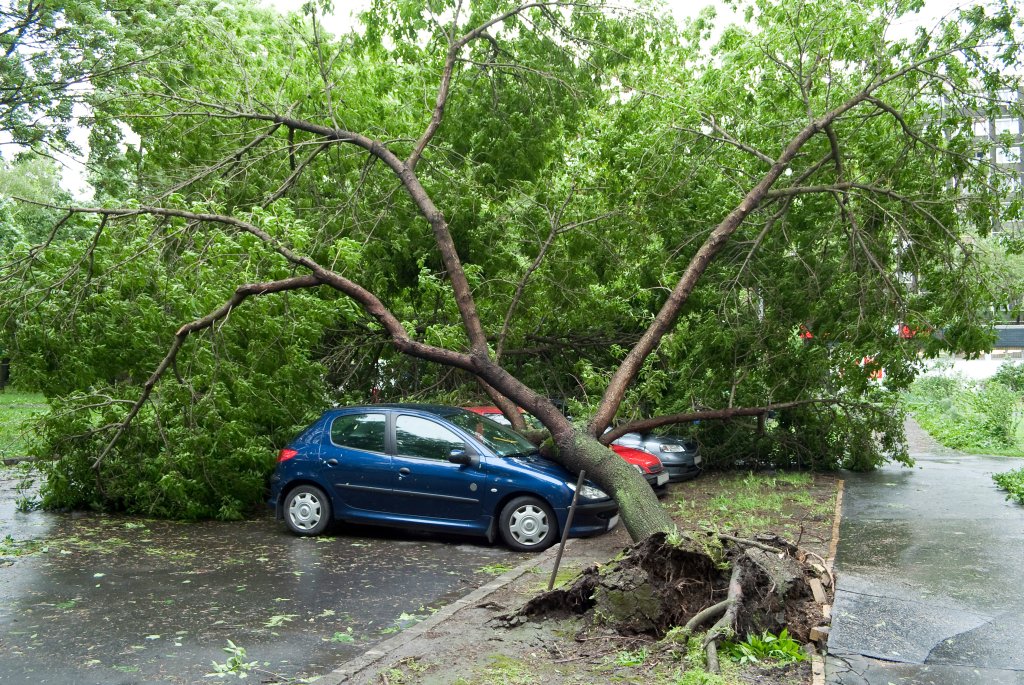Nature’s always been generous when it comes to resources and biomes. But nature has a funny way of keeping everyone on their toes simultaneously. Because when ‘everyone’ is involved, almost nothing can stop it from affecting everything in the vicinity.
Although this benefits the rest of the wildlife, the same can’t be said for homeowners. Since nature has a bad tendency to be destructive, it can lead to numerous situations that either flood their entire property or completely decimate everything they own. Storms are a prime example of both of these situations.
Even though the only elements involved in storms are air and water, the intensity they deliver can easily change anyone’s mind. And due to their strength, nothing is safe from their path of destruction. Even the sturdiest trees can’t handle them. Because before you know it, homeowners will find how badly damaged they are in the aftermath.
1. Assess The Damage
Before putting on some chaps and revving up your chainsaw, you must deduce how badly damaged the tree is. After all, just because it looks nothing like how it used to be, that doesn’t mean you should have it removed immediately, especially if you’re particularly attached to it. For instances where only a few branches got damaged, you’re better off trimming them instead.
However, considering how storms can escalate into typhoons or hurricanes, some broken branches might not be the only thing that happens to your tree. If every tree limb fell off, you might have to consider clearing them off since it’ll take a long time to heal, much less regrow. And due to heavy precipitation, the ground will loosen until it reaches a point where the strong winds can topple the tree over due to its roots losing their grip.
2. Stay Away From Downed Power Lines
The same can happen to power lines if trees are affected by heavy storms. Because given their height and how they’re posted to the ground, strong winds will inevitably push them down. Therefore, it’s safe to say that they might get similar treatment to the trees.
However, compared to trees, these power lines transmit electricity. So, you can probably imagine what kind of disaster will happen if you combine that with water. Thus, completely avoiding nearby power lines should be a top priority. Unless you’re positive they retained their integrity, giving them a wide berth is best.
3. Go Around Damaged Trees

Although you’re already fully equipped with state-of-the-art tree climbing gear or safety equipment, that doesn’t mean you’re completely safe from everything the tree might hit you with, especially if they’re badly damaged. Hanging branches, trees barely held together by the trunks, broken tree tops—although your tree has seen better days, there’s no telling how dangerous they can be.
Because just like everything else, hanging branches and split-open trunks are still susceptible to gravity. Unless you’re decked out with full safety gear from head to toe, you can only rest assured that nothing will hurt you. Or at least not get hurt so much that your health will get compromised to the point of hospitalization.
So, instead of going through all that effort, it’s better to avoid damaged trees, especially if they’re injured this badly. Otherwise, those hanging branches might cause a concussion or piercing through your body. Instead, scrutinize their damage at a distance, and don’t forget to inform the professionals if you contact them.
4. Contact A Professional
Given their size, it’s no surprise because many risks involve clearing trees. Even though you’re confident with your gardening skills, handling trees is on an entirely new level, which you must’ve noticed by now. From hanging tree limbs to torn tree trunks, damaged trees are just one risk after another.
That’s why hiring arborists is highly recommended. Since they’re proficient with everything involving trees, you can guarantee they’re the tree experts. Therefore, maintaining and removing them is already a familiar concept. Because of this familiarity, they’re more than aware of how dangerous it is to deal with removing damaged trees. But they possess appropriate equipment that helps make their job easier. And they might even recommend which species of trees are good and bad for your yard after the operation.
However, considering how sudden it must be for a tree to be broken on your property, you might be too shocked to process what just happened. Once the shock wears off, you’re bound to spiral into a panic as you figure out how to handle the mess left behind by your broken tree. But at just the right moment, help might fall right on your doorstep in the form of individuals who saw what happened to your tree and are offering to clean it up.
Don’t accept their offers. Professional tree service companies never go door-to-door. Thus, aptly naming these individuals ‘door-knockers.’ So, whatever happens, you must possess a clear head. Otherwise, you might get exploited by frauds.
5. Clear Up Fallen Debris
Your work isn’t done even if you’ve already inspected your tree and contacted an arborist. Since you still have time to kill before the tree services arrive, you should make the most of it by tidying up the area. Wear a protective helmet when removing any fallen branches and leaves littered about. Always remain vigilant from getting too close to the damaged tree. This way, the professionals have a clear space they can work on without risking additional safety hazards.
Takeaway
Despite its generous resources, nature is a force to be reckoned with since storms alone are enough to leave so much destruction in their wake.
Everything can be destroyed regardless of whether they’re artificial structures or trees. And trees are no different. Therefore, the need to clear them out from your property might come up. But before you start chopping, you must know how to do this properly.

